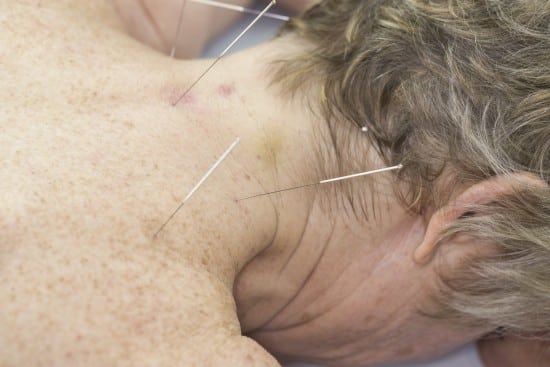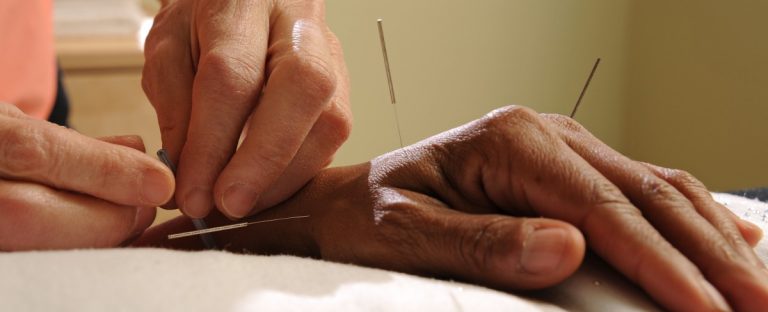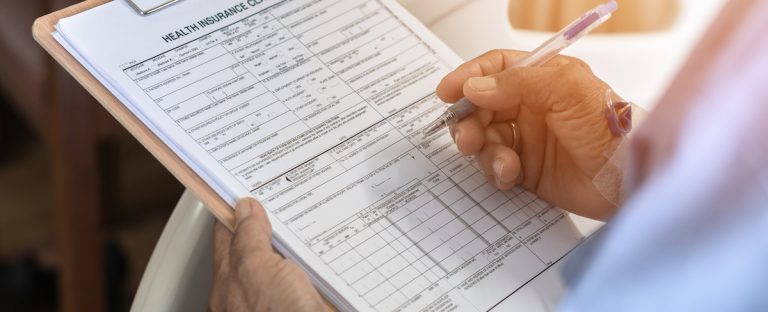Did you know that roughly 30% of medical billing claims are rejected? That’s a significant chunk of your overall healthcare revenue cycle that will cost you in the short and long run. These claims might be rejected for a few reasons – a key one which is inaccurate coding.
That’s why it’s essential for your acupuncture practice to leverage current CPT codes that accurately reflect the services rendered. Having to rework claims results in costly reimbursement delays plus it takes up your time and energy!
If your holistic practice continues to make mistakes with acupuncture CPT codes, you can have increased denial rates and declining insurance reimbursements, which could put your practice at risk. Accurate acupuncture CPT codes and billing practices can help ensure your holistic practice reaches its full revenue potential.
We want to help reduce your medical billing stress, so we’ve compiled a handy reference list of the acupuncture CPT codes to use in 2023. Be sure to bookmark this page so you can easily access it!
Top 4 Essential Acupuncture Billing Codes for 2023
The bulk of the services you will bill to insurance will likely fall under four essential acupuncture CPT codes. Since acupuncture services are always billed in 15-minute increments, your practice will use one code for the initial 15 minutes of service and then a separate code for additional units of time.
Your acupuncture CPT codes will only vary if you include electronic stimulation in your treatment.
- 97810 Initial Acupuncture: Initial 15-minute insertion of needles, personal one-on-one contact with the patient. (Do not report in conjunction with 97813; use one or the other.)
- 97811 Subsequent Unit of Acupuncture: Use one unit per each additional 15 minutes of personal one-on-one contact with the patient after the initial 15 minutes, with re-insertion of needles. (May be used in conjunction with either 97810 or 97813)
- 97813 Initial Acupuncture with Electrical Stimulation: Initial 15-minute insertion of needles, personal one-on-one contact with the patient. (Do not report in conjunction with 97810; use one or the other.)
- 97814 Subsequent Unit of Acupuncture with Electrical Stimulation: Use one unit per each additional 15 minutes of personal one-on-one contact with the patient, with re-insertion of needles. (May be used in conjunction with either 97810 or 97813)
Acupuncture CPT Codes for Medicare
January marks the three-year anniversary of Medicare expanding their coverage options to include acupuncture for treating chronic lower back pain. CPT codes related to billing Medicare for acupuncture treatments are as follows:
- 97810: Acupuncture, one or more needles, without electrical stimulation, initial 15 minutes of personal one-on-one contact with the patient
- 97811: Each additional 15 minutes of personal one-on-one contact with the patient, with re-insertion of needles
- 97813: Acupuncture, one or more needles, with electrical stimulation, initial 15 minutes of personal one-on-one contact with the patient
- 97814: Each additional 15 minutes of personal one-on-one contact with the patient, with re-insertion of needles
- 20560: Services with needle insertion(s) without injection(s) of 1 or 2 muscle(s)
- 20561: Services with needle insertion(s) without injection(s) of 3 or more muscle(s)
Prices will depend on the region of your holistic practice; look up specific codes based on your location here.
Acupuncture CPT Codes for Patients
Medical billing codes for patients can be broken down into two categories, new and returning patients:
2023 Billing Codes for New Patients
Use these acupuncture CPT codes for when your holistic practice receives new patients. As a reminder, a new patient is defined as a patient who hasn’t received professional services from you or another provider of the same specialty who has belonged to your practice within the past three years.
- 99202 Evaluation/Management (Expanded): Presenting problems are of low to moderate severity; requires an expanded problem-focused history, an expanded problem-focused examination, and straightforward medical decision-making; the provider typically spends 20 minutes face-to-face with the patient
- 99203 Evaluation/Management (Detailed): Presenting problems are of moderate severity; requires a detailed history, a detailed examination, and medical decision-making of low complexity; the provider typically spends 30 minutes face-to-face with the patient
- 99204 Evaluation/Management (Comprehensive): Presenting problems are of moderate to high severity; requires a comprehensive history, a comprehensive examination, and medical decision-making of moderate complexity; the provider typically spends 45 minutes face-to-face with the patient
Billing Codes for Returning Patients
These CPT codes for acupuncture can be used for your established patients. Returning patients are those who have received any professional services from you or another provider of the same specialty who has belonged to your practice within the past three years.
- 99212 Evaluation/Management (Limited): Presenting problems are self-limited or minor; requires a problem-focused history, a problem-focused examination, and straightforward decision-making; the provider typically spends 10 minutes face-to-face with the patient
- 99213 Evaluation/Management (Expanded): Presenting problems are of low to moderate severity; requires an expanded problem-focused history, expanded problem-focused examination, and medical decision-making of low complexity; the provider typically spends 15 minutes face-to-face with the patient
- 99214 Evaluation/Management (Detailed): Presenting problem(s) are of moderate to high severity; requires a detailed history, a detailed examination, and medical decision-making of moderate complexity; providers typically spend 25 minutes face-to-face with the patient
Medical Billing Codes for Physical Therapy Treatments
Acupuncture practices use a variety of treatments and modalities to help their patients; your practice may bill for the following:
- 20550 & 20551 Tendon Injection: Single tendon injection for the treatment of fasciitis. Could include multiple injections into a single tendon sheath (CPT code 20550) or the tendon origin (CPT code 20551)
- 20552 & 20553 Muscle Injection(s): Injections involving single or multiple trigger points. Could be used to treat one or two muscles (CPT code 20552) or three or more muscles (CPT code 20553)
- 97010 Heat Therapy: Application of a modality to one or more areas; hot or cold packs
- 97016 Cupping: The use of a vasopneumatic device may be considered reasonable and necessary for the application of pressure to an extremity for the purpose of reducing edema
- 97026 Infrared Therapy: The application of infrared therapy is considered medically necessary for patients requiring the application of superficial heat in conjunction with other procedures or modalities to reduce or decrease pain/produce analgesia or reduce stiffness/tension, myalgia, spasm, or swelling
- 97110 Therapeutic Exercise: One or more areas, every 15 minutes; therapeutic procedures to develop strength and endurance, range of motion, and flexibility with direct (one-on-one) patient contact
- 97112 Neuromuscular Reeducation: Treatments to restore movement, balance, coordination, kinesthetic sense, posture, and/or proprioception for sitting and/or standing activities with direct (one-on-one) patient contact
- 97140 Manual Therapy: Techniques such as mobilization and manipulation, manual lymphatic drainage, and manual traction, one or more regions, every 15 minutes with direct (one-on-one) patient contact
- 97124 Massage Therapy: Includes effleurage, petrissage, and/or tapotement (stroking, compression, percussion) with direct (one-on-one) patient contact
- 97530 Kinetic Activities: Use of dynamic activities to improve functional performance, every 15 minutes with direct (one-on-one) patient contact
Medicare Billing Codes for Principal Care Management (PCM) in 2023
Principal care management involves managing a single, complex chronic condition; the goal here is to deliver a focused treatment and management plan that addresses a patient’s chronic condition.
- 99424: Principal Care Management performed by a physician or non-physician provider for 30 minutes per calendar month
- 99425: Additional 30 minutes per calendar month
- 99426: PCM performed by clinical staff under the direction of a physician or other qualified healthcare professional for 30 minutes per calendar month
- 99427: Additional 30 minutes per calendar month
These codes will allow providers to report care management services for patients with chronic conditions, such as lower back pain, in an effort to improve monitoring these complex health problems.
Transform Your Medical Billing with HBS!
Balancing your acupuncture practice’s appointments, SOAP notes, billing and coding, all the while delivering care to your patients can be overwhelming. Save time, energy, and streamline your revenue cycle management by bundling your practice management with outsourced acupuncture insurance and Medicare billing!
As an experienced EMR and insurance billing provider for holistic practices, Holistic Billing Services can help your practice navigate the billing process to minimize denials and increase revenue. With a knowledgeable partner by your side, you can focus more on treating patients to help your acupuncture practice grow rather than worrying about insurance billing.
To learn more about our acupuncture billing services, talk to one of our friendly billing and coding experts today!
If you’re on the fence about opening up your practice to patients covered by Medicare, but you’re dubious of the extra workload dealing with billing Medicare for services rendered, then you’ve come to the right place.
Expanding your pool of patients to include those covered by Medicare is limited depending on your specialty—primarily acupuncture or chiropractic practices are covered by Medicare at this time—but can provide a great boost to your revenue cycle. Anticipating a headache when dealing with the medical billing process, however, is reasonable.
We at Holistic Billing Services understand the struggle, so let’s break down a few tips for the Medicare billing process!
What Types of Holistic Services Does Medicare Cover?
While Medicare’s coverage of complementary and integrated healthcare isn’t terribly comprehensive, there are a couple of holistic services that Medicare currently covers; these include:
Acupuncture
Acupuncture has been proven to be effective for treating a variety of ailments and chronic conditions. At present, Medicare beneficiaries may be treated for chronic lower back pain, defined as:
- Lasting 12 weeks or longer;
- nonspecific, in that it has no identifiable systemic cause (i.e., not associated with metastatic, inflammatory, infectious, etc. disease);
- not associated with surgery; and
- not associated with pregnancy
Medicare will cover up to 12 visits in a 90 day period; if the patient demonstrates improvement, then Medicare will cover an additional 8 visits but treatment is not to exceed 20 treatments in an annual period.
The good news is that there are legislative efforts to greatly expand Medicare coverage for acupuncture! In July 2021, the Acupuncture for Seniors Act, legally classified as HR 4803, was introduced to Congress and would significantly broaden the scope of acupuncture coverage provided by Medicare.
Chiropractic Treatments
Did you know that Medicare has technically covered chiropractic treatments for 50 years?
In 1972, Medicare first introduced coverage with the limited scope of spinal manipulation; not much has changed since then, unfortunately.
However, much like the Acupuncture for Seniors Act would improve coverage for acupuncture services, there are promising legislative efforts to expand Medicare coverage of chiropractic treatments! The Chiropractic Medicare Coverage Modernization Act, legally identified as HR 2654, would enable patients under Medicare coverage to visit a chiropractor for their comprehensive range of services.
Such services might include manual manipulation of the patient’s spine and extremities, evaluation and management of conditions, diagnostic imaging, and the utilization of other non-drug treatments in an effort to combat prescription abuse and fight the opioid epidemic.
Essentially, this bill:
- Provides patient access to all Medicare-covered benefits as delivered by a chiropractor’s state licensure
- Categorizes a Doctor of Chiropractic (DC) as a “physician” in Medicare’s programming and thus expands their authority as recognized by Medicare
- Requires that DCs complete a documentation webinar
- Has bipartisan support and was introduced by 16 cosponsors from both sides of the political aisle
As a whole, this legislation would enable tremendously more access to all services provided by a chiropractor and thus empower chiropractors to treat a new range of patients who are covered by Medicare.
Medicare Billing: 3 Tips for Your Holistic Practice

When it comes to the Medicare billing process, follow these essential steps to streamline your holistic practice’s revenue cycle:
Submit Accurate and Complete Claims
One of the biggest tips for Medicare billing—and any kind of medical billing processes your holistic practice might handle—is to submit claims that have been coded correctly and to the fullest extent possible. Inaccurate or incomplete claims really throw a wrench in your practice’s revenue cycle by delaying payment and dedicating resources to reworking a claim that could have been better utilized elsewhere.
Medicare coverage and payments require an item or service:
- Meet a benefit category
- Isn’t specifically excluded from coverage
- Is reasonable and necessary
Be sure to employ the most current and comprehensive CPT codes needed, plus any further documentation required with the claim so that your submission can be addressed in a prompt manner.
Send Claims to the Appropriate Programs
Filling out claims correctly and completely is an essential foundational step for Medicare billing, but an important follow-up is making sure you’re sending that claim to the appropriate program pertaining to your patient.
For example, if your patient is enrolled in Medicare’s Fee-for-Service program, you’ll need to send the claim to your Medicare Administrative Contractor (MAC); on the other hand, if your patient is enrolled in a Medicare Advantage (MA) plan, then you’ll need to submit your claim to their MA plan directly.
A third option is that your patient might have primary coverage provided by another payer—known as the Medicare Secondary Payer (MSP) program—like an insurance company; in this case, you’ll need to submit the claim to the primary coverage provider first.
File in a Timely Manner
Medicare mandates claims are filed within 12 months or 1 calendar year; claims that are filed after this strict deadline are automatically denied. Keep in mind that this kind of denial isn’t the same as a determined rejection based on the claim itself—missing the window for filing is a denial that cannot be appealed.
Partner with Holistic Billing Services to Streamline Your Medical Billing Processes!
Want to optimize your practice’s revenue cycle? Ready to expand the range your holistic practice offers to your community by including acupuncture or chiropractic services? Partner with an expert medical billing firm that has specialized expertise in handling medical and Medicare billing experience.
At Holistic Billing Services, we deal exclusively with holistic healthcare practices that deliver acupuncture, massage therapy, and chiropractic treatments to communities around the country. Whether you have questions on chiropractic insurance billing or other methods to enhance your revenue cycle management, feel free to contact our team today and let us know how we can help your practice today!
As the healthcare industry continues to fight the opioid epidemic and encourage the use of drug-free alternatives to managing pain and other chronic conditions, it’s important to also expand coverage to enable such movements to spread. Particularly, expanding chiropractic Medicare billing coverage is a vital effort to improve access to drug-free alternatives for seniors covered by this government program.
One recent initiative to expand drug-free coverage under Medicare is the Chiropractic Medicare Coverage Modernization Act proposed by New York Congressman Brian Higgins and championed by the American Chiropractic Association. Officially filed as H.R. 2654, this legislation would significantly improve access to chiropractic treatments and other related drug-free services.
A Look at the Chiropractic Medicare Coverage Modernization Act (H.R. 2654)
The Chiropractic Medicare Coverage Modernization Act (HR 2654) would enable patients under Medicare coverage to visit a chiropractor for their comprehensive services. Such services might include manual manipulation of the spine and extremities, evaluation and management of conditions, diagnostic imaging, and the utilization of other non-drug treatments in an effort to combat prescription abuse and fight the opioid epidemic.
Essentially, this bill:
- Provides patient access to all Medicare-covered benefits as delivered by a chiropractor’s state licensure
- Categorizes a Doctor of Chiropractic (DC) as a “physician” in Medicare’s programming and thus expand their authority as recognized by Medicare
- Requires that DCs complete a documentation webinar
- Has bipartisan support and was introduced by 16 cosponsors from both sides of the political aisle
As a side note, the component regarding completing a documentation webinar means that DCs would be required to participate in a webinar that explains how to include proper documentation for billing Medicare. The medical billing and coding process is rather intricate, so mandating a webinar regarding appropriate documentation for billing Medicare would help inform DCs on the process and, ideally, reduce the number of claims filling inaccurately or incompletely.
Overall, this piece of legislation would grant significantly more access to all services provided by a chiropractor and thus empower chiropractors to treat a new population of patients who are covered by Medicare.
Fighting the opioid epidemic doesn’t happen overnight, nor can it be comprehensively addressed with just a single Act, but every little bit counts. Radically expanding chiropractic Medicare coverage for millions of people is one important step to encouraging drug-free alternatives to pain and ailment management plans.
Current Chiropractic Medicare Billing Coverage
The relationship between chiropractic coverage and Medicare has existed for decades—50 years, in fact.
The field of chiropractic medicine was established in the late 19th-century by Daniel David Palmer; the first chiropractic treatment occurred when Palmer noticed his building’s janitor, who was hard of hearing, had a vertebra out of place. Upon manipulating the vertebra back into place, the janitor’s hearing improved and the rest is history. Manual manipulation of the spine, joints, and holistic body has a long tradition of improving overall health and continues to be a cornerstone alternative to prescription drugs.
Let’s briefly outline the history of chiropractic coverage in relation to federal or national recognition:
- 1972: Medicare introduces chiropractic coverage under the limited scope of spinal manipulation
- 1974: Chiropractic treatments are included as part of the Federal Employees Health Benefits Program
- 1993: Congress passes legislation that includes chiropractic medicine in the US Department of Defense healthcare system
- 1999: Legislation passes to include chiropractic care in the Veterans Affairs healthcare system
- 2014: The VA launched a chiropractic residency program, the first of its kind in the country, where chiropractors train alongside their medical counterparts at VA medical systems around the country
- 2019: H.R. 3654 is introduced to the 116th session of Congress by two New York Congressmen, Brain Higgins and Tom Reed, which would expand coverage of Medicare to include comprehensive services as delivered by a licensed chiropractor; the Bill garners 90 cosponsors but ultimately does not pass before the end of that Congressional session
- 2021: H.R. 2654 is re-introduced by Brian Higgins to the 117th session of Congress and is presented with 16 bipartisan sponsors, which is promising to the future of the Bill; the legislation is the same as the original H.R. 3654 bill
With support from the ACA and chiropractors around the country, H.R. 2654 has a strong chance to pass in this session of Congress and greatly expand coverage of chiropractic services for millions of patients.

Benefits of Chiropractic Treatment
Chiropractic treatment has been proven to deliver several benefits, including:
Proven Alternative to Prescription Opioids
A recent study conducted in 2020 examined two groups of more than 100,000 people total between the ages of 18 and 84: one group, who went to their doctor alone for managing their pain, and another group who received primary care and chiropractic care.
The study found that those who visited a chiropractor in addition to their primary physician were less likely to be prescribed opioids to manage their pain—in fact, they had half the risk of being prescribed opioids. These findings are significant because it proves that chiropractic treatment is an effective and safe drug-free alternative to managing chronic pain, temporary ailments, and more.
Reduces Chronic Back Pain
Of the 22 million people who seek chiropractic treatment any given year, nearly 8 million of them are seeking relief from chronic back pain. Whether caused by an athletic injury, a car accident, a muscle strain, or something else, chiropractic treatment is effective at managing chronic back pain.
Improved Range of Motion
Routine, consistent chiropractic treatments result in an improved range of motion. Chiropractic treatment reduces inflammation, aids in blood flow, and ensures that your spine and joints are in their optimal positions to enable smooth movement. Increasing your range of motion means that regular activities require less effort on your part!
Optimize Your Chiropractic Medicare Billing Cycle with Holistic Billing Services!
Medicare’s expansion to further include comprehensive chiropractic care would provide a huge benefit to your chiropractic practice and could bring in a whole new group of potential patients; how exciting! Want to optimize your practice’s revenue cycle? Partner with an expert medical billing firm that has specialized expertise in handling chiropractic billing and Medicare experience.
At Holistic Billing Services, we deal exclusively with holistic healthcare practices that deliver acupuncture, massage therapy, and chiropractic treatments to communities around the country. Whether you have questions on chiropractic insurance billing or other methods to enhance your revenue cycle management, feel free to contact our team today and let us know how we can help your practice today!
At Holistic Billing Services, we know that trying to make sense of the medical billing cycle can be confusing and intimidating. There are so many acronyms to learn and putting the pieces of the massive puzzle can feel impossible; we’re here to help break down the process and explain some of the acronyms involved. In particular, the Centers for Medicare and Medicaid Services (CMS) has an intricate methodology to determine physician payment.
Their methodology, the Resource-Based Relative Value Scale (RBRVS), is also used by some private payer entities, so understanding how the RBRVS and its basic unit, the Relative Value Unit (RVU), impacts your holistic practice’s revenue cycle and the Medicare billing process is helpful to know a component of your practice’s finances.
What Is a Relative Value Unit?
A relative value unit (RVU) defines the value of a service or procedure in relation to all other services or procedures. This measure is based on the extent of physician work, clinical and non-clinical resources, and expertise required to deliver the healthcare service to patients. It’s important to note that RVUs don’t directly represent the payout for a physician’s services but are a relevant factor in helping CMS determine that figure.
Why Are RVUs Important to Understand?
From one perspective, anything to do with your financial bottom line is important to understand—therefore understanding what relative value units do and their role in Medicare billing is helpful for evaluating your revenue cycle and anticipating future changes.
CMS operates under the rule of budget neutrality—that means that if one area’s rate goes up, a rate in a different area goes down. Since RVUs and their physician fee schedule are updated every year and liable to have some changes, it’s helpful to recognize the role that RVUs play in these changes so that your holistic practice can anticipate them.

What Is the Role of RVUs in a Physician Fee Schedule?
The Medicare physician fee schedule (MPFS) outlines more than 10,000 physician services, their associated relative value units, miscellaneous payment policy information or contexts, and more. The pricing amounts included in the MPFS are adjusted regarding the geographic region and other factors that are taken into account.
As a whole, under the resource-based relative value system (RBRVS), physician payments are determined by the following factors:
- RVUs
- Geographic Practice Cost Indices (GPCIs)
- Conversion Factor (CF)
An RVU is comprised of three components: work, practice expense, and malpractice. The work RVU reflects the general time and intensity associated with the service or procedure; the practice expense component reflects the cost of owning and operating a practice, such as renting space, practice equipment, and more; the malpractice RVU reflects the cost of malpractice insurance.
CMS adjusts the cost of each relative value unit in relation to the geographic practice cost index, which essentially factors in the cost of living depending on the location of the practice.
Finally, the conversion factor is updated by CMS every year and translates RVUs into dollar amounts.
The final equation for all of this results in the following:
Payment = (Work RVU + Practice Expense RVU + Malpractice RVU) x Conversion Factor
Overall, relative value units play a critical role in the equation that CMS and commercial fee systems utilize to establish the Medicare physician fee schedule.
How Do RVUs Impact Medicare Billing?
If your holistic practice is providing quality care and treatments to patients covered by Medicare, then it’s vital to gain a foundational understanding of how relative value units impact Medicare billing and thus a part of your finances:
Facilities and Non-Facilities Fees Differ
Payment rates for facilities differ from those for non-facilities; facility fees cover hospitals and in-patient services or procedures whereas non-facility fees cover physician offices or other independent settings.
Be sure to utilize the CMS Physician Fee Schedule search feature to learn more about the differences in fees.
RVUs and Audits
Relative value units are helpful for Medicare and other private payer systems to gauge an estimate for how much your services cost based on your geographic location and the other aforementioned factors. As such, there’s a state and national norm for what your services cost—and if you’re found to be charging exponentially higher than your competitors, then it could raise a red flag. In this case, you might be audited to see what’s going on.
Inaccurate Medical Coding and Billing Has Consequences
Since every service you provide to patients covered by Medicare has a correlating relative value unit and associated code, it’s vital that you submit accurately coded claims to Medicare for your services. Inaccurate billing can lead to an increased chance of audits and throws a wrench in your revenue cycle!
Partner with Holistic Billing Services to Handle Medicare Billing and Streamline Your Revenue Cycle!
Medicare billing and coding can be frustrating and overwhelming to deal with, especially if your internal resources are already stretched thin. That’s why partnering with a medical billing firm is proven to significantly optimize your revenue cycle and ensure that your practice is always up to date on current regulations and fee schedules.
At Holistic Billing Services, we deal exclusively with holistic healthcare practices that deliver acupuncture, massage therapy, and chiropractic treatments to communities around the country. Whether you have questions on private insurance billing or Medicare billing to enhance your revenue cycle management, feel free to contact our team today and let us know how we can help your holistic practice.
In recent years, there have been tremendous advances in legislation expanding the coverage that Medicare provides to millions of seniors around the country. In particular, expanding coverage to include holistic medicine has been most notable with the recognition—albeit limited recognition—of acupuncture services to treat chronic lower back pain which happened in early 2020. This relationship between Medicare and acupuncture is vital to providing the benefits of holistic treatment to millions of seniors!
About a year and a half later, in July 2021, another piece of legislation was introduced in the 117th Congress: legally classified as HR 4803, the Acupuncture for Seniors Act was written and sponsored by California Representative Judy Chu and would expand Medicare coverage of acupuncture in a few key manners.
Let’s dive into how this Act would impact acupuncture, both as a practice in its own right and in terms of your holistic practice.
HR 4803 Would Expand Medicare Coverage of Acupuncture
The Acupuncture for Seniors Act, known officially as HR 4803, would greatly impact the connection between Medicare and acupuncture by classifying licensed acupuncturists as Medicare providers who are qualified to provide services without supervision.
This kind of recognition from Medicare means that acupuncturists would be able to deliver care to more than 60 million Medicare beneficiaries. Plus, granting Medicare-provider status would streamline the medical billing process because acupuncturists would be able to bill Medicare directly instead of going through the physician-supervised requirement.
HR 4803 defines “qualified acupuncturists” as individuals who have state licensure or are certified by a nationally recognized authority, which helps providers who operate in states without a state license opportunity. Once again, this inclusive definition streamlines the patient-provider relationship and would make all licensed, certified acupuncturists able to serve Medicare patients.
Overall, the Acupuncture for Seniors Act would facilitate cost-effective and high-quality care to millions of people while encouraging the growth and development of acupuncture as a holistic practice and in communities around the country.
Current Status of Medicare and Acupuncture
The current status of Medicare and acupuncture is limited in comparison to what the Acupuncture for Seniors Act would do. At present, Medicare beneficiaries may be treated for chronic lower back pain, defined as:
- Lasting 12 weeks or longer;
- nonspecific, in that it has no identifiable systemic cause (i.e., not associated with metastatic, inflammatory, infectious, etc. disease);
- not associated with surgery; and
- not associated with pregnancy
Medicare will cover up to 12 visits in a 90 day period; if the patient demonstrates improvement, then Medicare will cover an additional 8 visits but treatment is not to exceed 20 treatments in an annual period.
CMS clarifies that “physicians, physician assistants, nurse practitioners/clinical nurse specialists, and auxiliary personnel may furnish acupuncture if they meet all applicable state requirements and have:
- A master or doctoral-level degree in acupuncture or Oriental Medicine from a school accredited by the Accreditation Commission on Acupuncture and Oriental Medicine (ACAOM); and
- current, full, active, and unrestricted license to practice acupuncture in a State, Territory, or Commonwealth (i.e. Puerto Rico) of the United States, or District of Columbia.”
In comparison, HR 4803 would significantly broaden the scope of care and the definition of who can provide acupuncture treatments—a huge win for Medicare and acupuncture!
How This New Bill Would Impact Your Acupuncture Practice
The Acupuncture for Seniors Act would tremendously benefit your acupuncture practice because you’d be able to treat patients with Medicare without the need for physician supervision—plus you’d be able to bill Medicare directly for these treatments.
This means that you can grow your practice to treat a whole population of people with a specific type of coverage that otherwise would have had to pay out of pocket for acupuncture treatments. And the ability to bill Medicare directly for these treatments translates to a streamlined revenue cycle management process for your practice!
Furthermore, this expansion of acupuncture services to be covered under Medicare validates and amplifies your efforts to deliver great care to the members of your community with a non-opioid, non-invasive treatment for pain. Perhaps this is the most important point of it all: providing holistic care that can radically improve patients’ quality of life and effectively function as a prescription alternative.

Proven Benefits of Acupuncture Treatments
Acupuncture provides a whole host of benefits, including:
Effective Pain Management
Acupuncture has been recognized for its effectiveness in treating pain, both chronic and acute. In fact, according to the National Institute of Health (NIH), several studies have found that such holistic treatments were proven to reduce pain for a variety of conditions and even manage constant pain such as low-back pain, neck pain, and osteoarthritis/knee pain.
Furthermore, in 2017, the American College of Physicians issued recommendations for treating patients who live with enduring lower back pain, including acupuncture as a proven drug-free treatment plan.
Proven Alternative to Opioid Drug Usage
As providers strive to reduce prescribing opioid drugs to manage pain, patients are directed to therapies like acupuncture as a holistic alternative that maintains an effective pain management quality. This is vital because a recent survey reveals that 49% of people reported knowing someone who has been addicted to prescription opioids; in other words, opioids are not to be taken lightly.
General Health and Wellness Benefits
While the NCCIH notes that acupuncture treatments have been proven to help treat lower back pain, neck pain, osteoarthritis, knee pain, and chronic migraines, the Acupuncture Evidence Project reviewed the effectiveness of acupuncture for 122 treatments over 14 clinical areas and have found some evidence of effect for 117 conditions. These include:
- High or low blood pressure
- Chemotherapy side effects and symptoms associated with it
- Facial pain, including dental pain
Optimize Your Acupuncture Practice’s Revenue Cycle with Holistic Billing Services!
Medicare’s expansion to include acupuncture would provide a huge benefit to your acupuncture practice and could bring in a whole new group of potential patients; how exciting! Want to optimize your practice’s revenue cycle? Partner with an expert medical billing firm!
At Holistic Billing Services, we deal exclusively with holistic healthcare practices that deliver acupuncture, massage therapy, and chiropractic treatments to communities around the country. Whether you have questions on acupuncture insurance billing or other methods to enhance your revenue cycle management, feel free to contact our team today and let us know how we can help your acupuncture practice.
Treating Medicare patients not only entails serving a greater population in your community, but it also means that your holistic practice may be subjected to Medicare audits. These can lead to suspension of payments and Medicare fees if your holistic practice isn’t up to snuff with current regulations and laws.
Unfortunately, healthcare waste, fraud, and abuse lead the Centers for Medicare and Medicaid Services (CMS) to be diligent in recovering as much federal money as possible. Of course, there is no way to avoid facing a Medicare audit—sometimes they’re random. But there are ways to prepare for one to reduce any negative outcomes.
Which Holistic Modalities Does Medicare Cover?
While Medicare currently doesn’t fully cover the many services offered by holistic practices, there has been a significant push to include coverage for practices that manage and promote holistic wellbeing.
For example, CMS recently introduced verbiage to cover acupuncture—with a few clauses related to back pain. According to Medicare, back pain can be covered if it meets the following conditions:
- It has lasted 12 weeks or longer
- There is no known cause (not related to cancer that has spread, inflammatory, or infectious disease)
- Pain not associated with surgery or pregnancy
Additionally, original Medicare pays for only one chiropractic service: manual manipulation of the spine if deemed medically necessary to correct a subluxation when one or more of the bones in your spine are out of position.
This procedure, when performed by a chiropractor or other qualified provider, is covered through Medicare Part B, the component of original Medicare that includes outpatient services; Medicare will pay 80% of the Medicare-approved rate for this procedure.
Overall, Medicare won’t cover therapies unless deemed medically necessary. Regardless of coverage status through Medicare, many insurance companies follow the same policies. Staying up to date on these regulations and the consequences attached to them is important for your holistic practice to stay efficient and effective.
How Audits Impact Your Holistic Practice
By identifying errors and devising remedial actions to eliminate them, audits serve a vital role in a healthcare organization’s compliance plan.
Medical audits provide a mechanism to:
- Review quality of care provided to patients
- Defend against federal and payer audits, malpractice litigation, and health plan denials
- Educate providers on documentation guidelines
- Optimize revenue cycle management
- Ensure appropriate revenue is captured
- Determine if organizational policies are current and effective
What Are CMS Audits?
The goal of audits—in any industry or business—is to see how compliant that organization is with whatever set of rules and regulations is established and relevant. That’s essentially the same goal of audits conducted by CMS of holistic practices.
These program audits measure compliance in terms of its contract with CMS, in particular, the requirements associated with access to medical or holistic services, drugs, and other enrollee protections required by Medicare.
The program areas for the 2021 audits include:
- CDAG: Part D Coverage Determinations, Appeals, and Grievances
- CPE: Compliance Program Effectiveness
- FA: Part D Formulary and Benefit Administration
- MMP- SARAG: Medicare-Medicaid Plan Service Authorization Requests, Appeals, and
- Grievances
- MMP- CCQIPE: Medicare-Medicaid Plan Care Coordination Quality Improvement Program
- Effectiveness
- ODAG: Part C Organization Determinations, Appeals, and Grievances
- SNP-MOC: Special Needs Plans – Model of Care
What Is the CMS Program Audit Process?
There are four phases to a CMS audit:
- Audit Engagement and Universe Submission: Six weeks before fieldwork is conducted, an organization is notified that it has been selected for a program audit and is required to submit the requested data, which is outlined in the respective Program Audit Data Request document.
- Audit Field Work: Over the course of three weeks, program audit fieldwork is conducted, mostly via webinar with the exception of the CPE review, which may occur onsite during the last week.
- Audit Reporting: Audit reporting occurs in multiple stages beginning at the conclusion of audit fieldwork. CMS first shares audit results with the holistic practice at the exit conference via the preliminary draft report, but the findings in a preliminary draft report are subject to additional review and evaluation after all supporting documentation has been received and evaluated, at which point classification occurs.
- Audit Validation and Close-Out: This is the longest phase of the program audit process, taking approximately six months to complete. During validation and close-out, an organization has an opportunity to demonstrate to CMS that it has corrected the noncompliance that was identified during the program audit.
What Does CMS Look For in Audits?
By conducting audits, either at random or as suspicious activity is reported, CMS works to prevent, reduce, or address a holistic practice exploiting CMS money or information, regardless of intention. Such issues to address might include falsifying claims that are billed to Medicare, charging excessively for Medicare services or supplies, making false statements on applications to participate in federal programs, and more.
Part of this stems from CMS regulations updating from year to year, so paying attention to their regulations on a continuous basis is important to maintaining compliance.
How Much Will CMS Increase Audits in the Future?
CMS’s budget for fraud, waste, and abuse mitigation doubled from 2021 to 2022 as the agency sought a $50.5 million increase in funding for “conducting greater levels of review.”
Medical review activities include pre- and post-payment audits and also encompass the Targeted Probe-and-Educate (TPE) process. CMS also requested additional funding for modeling and analytic tools aimed at identifying fraud, waste, and abuse.
The funding increase also allowed CMS to hire more administrative law judges (ALJs) in an attempt to reduce the backlog at the third level of Medicare provider appeals, which currently sits at five years.
5 Tips to Avoid CMS Audits

Perform a Self-Audit
Perform your own random mock audits based on the same criteria as a Medicare auditor to uncover what they would find and address any issues before they bring them to your attention. Visit the CMS website for the most up-to-date information on submitting claims that comply with Medicare guidelines.
Conducting internal audits at your holistic practice is important because it further ensures your practice is following all policies and procedures. Or, on the other hand, it points out areas of improvement for yourself and your team.
Prevent Billing and Coding Mistakes
Generally, Medicare pays claims based solely on your representations in the claims documents. Utilizing a standardized set of medical billing codes facilitates the billing process by bringing uniformity to the billing process.
When the coding on the claim does not meet the Medicare requirements and Medicare pays the claim anyway, the audit may discover this mistake. That’s why it’s so important to submit accurate claims and ensure appropriate coding is employed.
Provide Accurate Documentation
Holistic organizations need to make sure that everything is documented, including data presented on meaningful use reports generated by EHR and all other evidence. Auditors will be looking for discrepancies along the practice’s decision-making process.
By knowing the right procedures and eliminating errors with better technology, discrepancies can be kept to a minimum. Practices that have the appropriate documentation of every decision made—and each process change—will be able to easily find any potential trouble areas.
Review Every Process
Reviewing every process pertinent to the medical billing and patient information systems side of your holistic practice is important in preventing CMS audits.
As medical billing and patient information systems become more integrated, the need to review every process becomes more critical since a simple change could require an organization to upgrade multiple other systems to be successful. This is a good habit to establish with your holistic practice, especially if the coding of a specific holistic procedure changes.
Train Your Staff
One of the most common reasons a healthcare organization fails an audit is due to human error. This is where a well-trained and experienced billing team can be considered the most important driver of revenue for holistic practices. Billers and coders who are credentialed and certified from the proper associations are less likely to make mistakes and understand how to properly manage these solutions.
A qualified and confident staff is also more likely to be aware of industry changes that impact operations and can implement changes to remain up-to-date. This kind of staff is also more likely to advance principles that can make a bigger difference in the revenue cycle.
Avoid CMS Audits with Holistic Billing Services!
Our experts here at Holistic Billing Services believe that our success is your success. From handling medical billing and coding to offering consulting services and much more, our team is dedicated to making it feel like we’re in-house.
With a focus on holistic practices, insurance background, and proven consultants, our team can effectively ensure the financial success of clients, allowing your medical practice to focus on what it does best: treat patients.
Our expertise is rooted in professional, technical, and global billing for hospital and stand-alone holistic care practices. To learn more about how outsourced medical billing with Holistic Billing Services can empower your practice, contact us today. We’ll work with you to build a customized solution that meets the specific needs of your practice and allows you to get back to treating patients.
On January 21st, 2020, the Centers for Medicare and Medicaid Services (CMS) announced their decision to cover acupuncture for chronic low back pain. This is defined as localized pain in the lower back that persists for more than three months. The decision was momentous because it marked the first time acupuncture services could be reimbursed by Medicare.
Unfortunately, the decision also created a great deal of confusion. While Medicare now covers acupuncture services for lower back pain, there are a number of important conditions that must be met for treatment to be eligible for acupuncture billing. This makes many wonder what factors are considered for Medicare acupuncture coverage.
For example, the treatment must be administered under the “adequate supervision” of a physician, physician assistant, or nurse practitioner. This may sound simple enough, but the language used by the CMS ruling to define who may administer that treatment is deceptively complex.
Does Medicare Pay for Acupuncture?
The simple answer? Medicare doesn’t cover acupuncture for any condition other than chronic low back pain.
There are also additional acupuncture insurance billing requirements to follow, although the ruling has created the impression that any licensed acupuncturist can bill services to Medicare as long as they administer treatment in the presence of a physician, physician, assistant, or nurse practitioner. However, this is not an accurate interpretation of the CMS decision.
The ruling clearly states that a provider must be an MD/DO, physician assistant, nurse practitioner, clinical nurse specialist, or auxiliary personnel. They must also “possess a master’s or doctoral-level degree in acupuncture or Oriental Medicine from a school accredited by the Accreditation Commission on Acupuncture and Oriental Medicine (ACAOM)” and hold a “current, full, active, and unrestricted license to practice acupuncture” in the state.
Some holistic practices have seized upon the category of “auxiliary personnel” and taken it to mean something akin to an independent contractor. While an independent Licensed Acupuncturist may qualify as auxiliary personnel, the CMS ruling is quite clear on how this category can administer treatment:
“Auxiliary personnel furnishing acupuncture must be under the appropriate level of supervision of a physician, physician assistant, or nurse practitioner/clinical nurse specialist required by regulations…”
The key phrase here is “appropriate level of supervision,” which is typically interpreted under Medicare guidelines to mean that the person providing the service is “incident to” a physician’s professional services or hospital services. Put simply, means that the acupuncturist is administering treatment on behalf of the physician as part of the physician’s practice. All auxiliary personnel must, therefore, be supervised by the authorized Medicare provider.
Following this logic, then, auxiliary personnel cannot directly bill Medicare for any services rendered because they are not the registered Medicare provider. The supervising physician may bill Medicare for acupuncture treatments for lower back pain (with some restrictions), but the acupuncturist cannot do so themselves.
Furthermore, since licensed acupuncturists are not currently included on the list of Medicare provider groups, there is currently no way for them to directly bill Medicare for reimbursement. Hypothetically, if they were added to the list of qualified provider groups, they would be able to bill for eligible services (currently chronic lower back pain).
Unfortunately, an act of Congress would be necessary to expand the list of provider groups. Despite several attempts to add acupuncturists to the list of Medicare providers over the past 40 years (most recently with the Acupuncture for Heroes and Seniors Act, introduced in 2015 and reintroduced in 2017 and 2019), none of them have received a committee hearing in Congress.
Current State of Medicare Acupuncture Coverage
According to Medicare, back pain can be covered if it meets the following conditions:
- It has lasted 12 weeks or longer.
- There is no known cause (not related to cancer that has spread, inflammatory, or infectious disease).
- Pain not associated with surgery or pregnancy.
As of current Medicare acupuncture coverage regulations, no other sources of back pain will be covered. However, it’s not that simple. Since Licensed Acupuncturists are still not included on the list of Medicare provider groups, most acupuncture practices will be unable to deliver Medicare-approved acupuncture until an act of Congress changes the current verbiage to include them.
Additionally, Medicare guidelines state that a Medicare-approved acupuncture treatment must be no more than 45 minutes. Insurance companies may be inclined to decline payments if they receive an insurance claim from a provider for a 60-minute treatment.
While this CMS decision has made progress, it still does not serve the acupuncturing community as effectively as it may appear since the greater majority of Licensed Acupuncturists cannot deliver services covered by Medicare still unless they are working for a physician.
Acupuncture Medicare Fee Schedule
For Medicare-covered acupuncture, guidelines stipulate that up to 12 visits in the first 90 days may be covered for Medicare beneficiaries.
Up to eight additional sessions may be covered for patients who demonstrate improvement, but no more than 20 acupuncture treatments may be administered annually. Treatment must also be discontinued if the patient is not improving or is regressing.
The current rules cover the following acupuncture treatment codes (at the current Medicare national average fee schedule)
- 97810 ($37.89): Acupuncture, one or more needles, without electrical stimulation, initial 15 minutes of personal one-on-one contact with the patient.
- 97811 ($28.87): Each additional 15 minutes of personal one-on-one contact with the patient, with re-insertion of needles.
- 97813 ($42.22): Acupuncture, one or more needles, with electrical stimulation, initial 15 minutes of personal one-on-one contact with the patient.
- 97814 ($34.65): Each additional 15 minutes of personal one-on-one contact with the patient, with re-insertion of needles.
- 20560 ($26.71): Services with needle insertion(s) without injection(s) of 1 or 2 muscle(s).
- 20561 ($39.70): Services with needle insertion(s) without injection(s) of 3 or more muscle(s).
The Future of Medicare Billing for Acupuncture Services
While most acupuncture practitioners are currently ineligible to provide Medicare-covered services for patients, there are movements in place to change the verbiage surrounding acupuncture in the Social Security act to include more of the acupuncturing community.
The American Society of Acupuncturists is currently at work drafting a bill for Congress and gathering support to make a change to the existing guidelines. In early 2021, their goal is to secure bipartisan support for the bill and organize acupuncturist advocacy campaigns to increase awareness of their bill. For more information, check out the plan here.
At Holistic Billing Services, we deal exclusively with holistic healthcare practices like acupuncture, massage therapy, and chiropractic treatment. Our team of experienced billing and coding experts understand the unique needs of holistic practices – such as acupuncturist practices – and can help you take steps to accelerate your revenue cycle management. For any questions about holistic billing, feel free to contact our team today and let us know how we can help your acupuncture practice.







